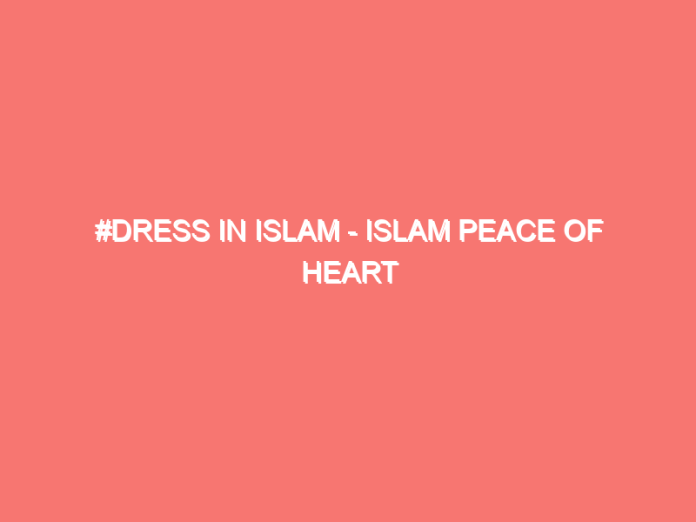DRESS IN ISLAM
There are five types of clothing.
• Forbidden for every obligee
• Halal for some, haraam for others
• Disgusting
• Permissible
• Mustahab al-Turk
1) Snatched clothes are haraam for everyone.
2) Silk clothing is good for women and haraam for adult men. There are two traditions of justification for wearing silk clothes for little boys and primitive justification. There are two contradictory traditions of justification of silk dress for Mujahideen in Jihad.
3) Wearing clothes long enough to enter the realm of arrogance and conceit. It is disgusting. In the same way, it is makruh to wear a garment in which the amount of silk and cotton is not known, Half or more.
4) Mustahab al-Turk is the garment on which people’s fingers are raised, And let the wearer is famous for it, Like someone dressed against civil and family customs.
It is better not to wear such clothes because people call them bad. And the result of society’s opposition is that people suffer from backbiting. As if this person causes people to suffer from the sin of backbiting, thus he becomes a partner in the sin of backbiting.
There are two types of clothing for us. One is obligatory and the other is recommended. There are two types of obligatory, One belongs to Allah, And the other has to do with the human right with the feature. The right of Allah is seventy women. We have explained this in detail in the chapter on nudity. The one who belongs to human rights is the one who protects from heat, cold, and various afflictions. Such a dress is obligatory. It is haraam to give it up because there is an attempt to commit suicide and it is haraam to try to commit suicide.
There are two types of recommended clothing. One has to do with pleasing Allah, The second is related to human society. The first is the garment which is like a chador. People wear it at prayer meetings, Eid-like gatherings, and on Fridays. The man should not wear beautiful clothes on his shoulders in such gatherings. The second type of clothing is that which people adorn by making from different types of legitimate clothes. It is important that a person does not lose his dignity and does not despise others. It is makruh to tie the Imamah with a few or open ones, and it is mustahabb to wear a few or a covered Imamah. It is makruh to dress in a way that contradicts the Arabic Waza and resembles the Ajmi Wazah.
The length of the pajamas is disgusting. It is narrated in the hadith that the Messenger of Allah said: A Muslim’s apron is up to half a shin. Even if it is between the ankles, there is no harm or sin. He who is below the ankles will burn in Hell. Whoever descends and drags his apron, Allah will not look upon him with mercy. This hadith has been narrated by Abu Dawood with his own Musnad from the narration of Abu Sayyid Al-Khudri, It is makruh to wrap the chador in prayer in such a way that both the poles are on one side and the spring of the hand does not wake up. If the middle part of the chador is tied on the head, then it is not permissible. The best way to do this is to raise both knees to the side of the chest and sit on the side of the chest. And wrap a sheet around the back and bring it to the front and wrap it around the knees so that the back is supported. This keeps the genitals open from the front, but if a garment is worn internally, it is not illegal. It is makruh to wrap one’s face and cover one’s nose in prayer. It is makruh for men to adopt feminine ways and for women to imitate men’s clothing. The Messenger of Allah, may Allah bless him and grant him peace, cursed those who did so and promised punishment.











